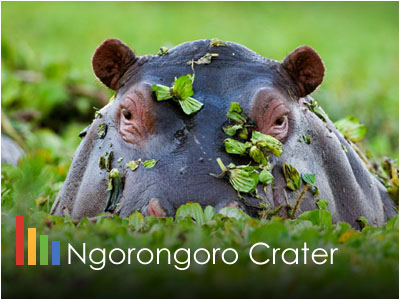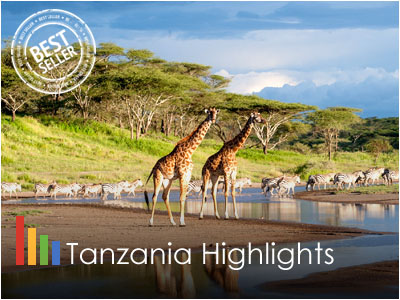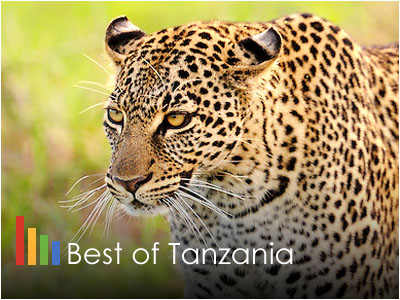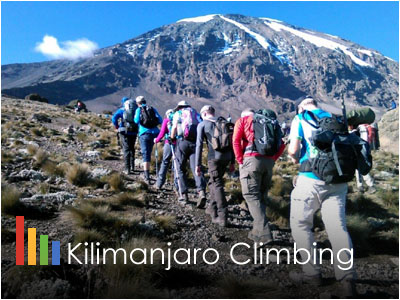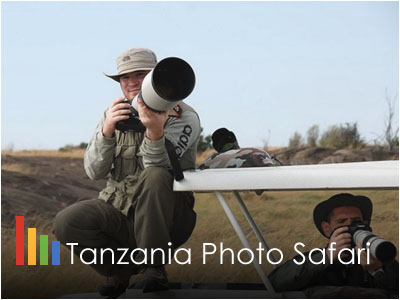Arusha National Park, Tanzania, Africa
Arusha National Park - Tanzania, Africa
Arusha National Park located within the outskirts of Arusha town Tanzania was established in 1960, the park contains a rich variety of flora and fauna. It is the site of Mount Meru (14,978 ft [4,565 m]) and Ngurdoto Crater, an extinct volcano. Nearby are Mount Kilimanjaro, Olduvai Gorge, and Ngorongoro Crater, whose surrounding area teems with wildlife. Located just a short drive from Arusha and Moshi, the Arusha National Park is Tanzania's most accessible national park and the perfect place for a day trip or as the first or last stop on a longer itinerary. At just 552 square kilometres, it's a small park with a lot to see. Arusha National Park is also home to the world's largest population of giraffes, making it a great place to visit for fans of these long-necked, beautiful animals.
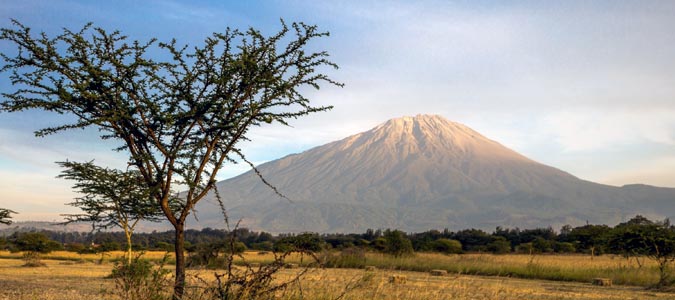
Basic Facts - Arusha National Park
Arusha National Park boasts a broad variety of landscapes, ranging from open savannah through acacia scrubland to rainforest and, eventually, to alpine conditions on the higher reaches of Mt. Meru. Arusha National Park is the home to Mount Meru (4,566 m), breathtaking landscapes ranging from the Meru Crater in the west, the Ngurdoto Crater in the south-east to the grasslands and of course the alkaline Momella lakes in the north-east. This park is often overlooked by visitors, worried they will not see that much wildlife. However Arusha National Park has such a lot to offer and dazzles with a perfect mix of flora and fauna and diversified landscapes. Passing the “small Serengeti” during a game drive, you are likely to spot peaceful herds of buffaloes, shy bushbucks on the edge of the forest as well as warthogs and zebras. Heading towards the Ngurdoto Crater you will soon find yourself in a lush rainforest – a great place to spot the athletic black and white colobus monkey as well as the elegant mitis monkey. The Ngurdoto Crater is basically a smaller version of the Ngorongoro Crater and has a diameter of about 3 km. With a bit of luck you might even spot buffaloes in the swamps on the crater floor.
More About Arusha National Park
Arusha National Park covers Mount Meru, a prominent volcano with an elevation of 4566 m, in the Arusha Region of north eastern Tanzania. The park is small but varied with spectacular landscapes in three distinct areas. In the west, the Meru Crater funnels the Jekukumia River; the peak of Mount Meru lies on its rim. Ngurdoto Crater in the south-east is grassland. The shallow alkaline Momella Lakes in the north-east have varying algal colours and are known for their wading birds. Mount Meru is the second highest peak in Tanzania after Mount Kilimanjaro, which is just 60 km away and forms a backdrop to views from the park to the east.
Arusha National Park lies on a 300-kilometre axis of Africa's most famous national parks, running from Serengeti and Ngorongoro Crater in the west to Kilimanjaro National Park in the east. The park is just a few kilometres north east of Arusha, though the main gate is 25 km east of the city. It is also 58 km from Moshi and 35 km from Kilimanjaro International Airport.
Due to the low numbers of predators in Arusha Nationaal Park, walking safaris are permitted. This is a must for anyone wanting to get a closer look at the moss covered trees and the occasional red hot pokers as well as for those wanting to get up close to wildlife. Most common sightings whilst on a walking safari include buffaloes, warthogs, giraffes and a variety of birds such as the silvery cheeked hornbill, little bee-eater and the occasional long crested eagle. The walk takes visitors to the refreshing Tululusia waterfalls and back to the Momella gate.
On the way towards the Momella Lakes, visitors are in for a treat as common waterbucks and reedbucks love to hang around the lake shore. An array of water birds like cormorants, kingfishers and beautiful flamingos are also often spotted. There are seven alkaline lakes to be seen and each lake has a different salt concentration. Visitors also have the option of going on a canoe trip on the small Momella Lake. Arusha National Park is also home to about a handful of African elephants but due to their constant movement they are hardly ever spotted. The same goes for leopards which roam the vast foggy forests of Mt Meru. For more information regarding tours and safaris to Arusha National Park, please DO NOT hesitate to Contact Us.
An easy 40-minute drive from Arusha. It is approximately 60 km (35 miles) from Kilimanjaro International Airport. The lakes, forest and Ngurdoto Crater can all be visited in the course of a half-day outing at the beginning or end of an extended northern safari. The closest national park to Arusha town – northern Tanzania’s safari capital – Arusha National Park is a multi-faceted jewel, often overlooked by safari goers, despite offering the opportunity to explore a beguiling diversity of habitats within a few hours.
The entrance gate leads into shadowy montane forest inhabited by inquisitive blue monkeys and colourful turacos and trogons – the only place on the northern safari circuit where the acrobatic black-and-white colobus monkey is easily seen. In the midst of the forest stands the spectacular Ngurdoto Crater, whose steep rocky cliffs enclose a wide marshy floor dotted with herds of buffalo and warthog.
The park contains the most pachyderms per km sq. in Tanzania. As visitors enter the gate, they pass into the lush forest, home to troops of baboons and blue monkeys. Buffalo and hippo lurch in the adjacent Hippo Pool. The vegetation eventually merges into flat topped acacia woodland where, in the heat of the day entire prides of lion can be seen stretched on the branches of these trees - a habit prevalent to Manyara lions. Along with these amazing tree-climbing lions there are the usual browsers and grazers as well as the curios-looking banded mongoose. Two thirds of the park is dominated by the slightly alkaline lake which is home to a huge variety of waterbirds. More than 400 species of bird including flamingo, pelican, red billed quelea, storks, sacred ibis, cormorants and Egyptian geese can be sighted in this area. Other species of birds include the African spoonbill, lesser flamingo, white pelican and white faced duck.
Although elephants are uncommon in Arusha National Park, and lions are absent altogether, leopards and spotted hyenas may be seen slinking around in the early morning and late afternoon. It is also at dusk and dawn that the veil of cloud on the eastern horizon is most likely to clear, revealing the majestic snow-capped peaks of Kilimanjaro, which is only 50km (30 miles) away. But it is Kilimanjaro’s unassuming cousin, Mount Meru – the fifth highest mountain in Africa at 4,566 metres (14,990 feet) – that dominates the park’s horizon. With its peaks and eastern foot slopes protected within the national park, Meru offers unparalleled views of its famous neighbour, while also forming a rewarding hiking destination in its own right.
Passing first through wooded savannah where buffalos and giraffes are frequently encountered, the ascent of Meru leads into forests aflame with red-hot pokers and dripping with Spanish moss, before reaching highly open heath spiked with giant lobelias. Everlasting flowers cling to the alpine desert, as delicately-hoofed klipspringers mark the hike’s progress. Astride the craggy summit, Kilimanjaro stands unveiled, blushing in the sunrise.
AfriChoice operates a wide range of carefully designed tours and safaris to Arusha National Park by providing transport and booking a hotel for you. Our safari consultants will always be at your assistance should you need a tailor-made holiday to this unique destination. NB: For more information regarding Arusha National Park, DO NOT hesitate to Contact Us.
Contact Us for more information:
Tanzania Popular Wildlife Safaris
-
Serengeti Safari Adventure
Serengeti 3 Days Safari
-
Ngorongoro Crater Tour
Ngorongoro Crater Safari
-
Tanzania Highlights Safari
Tanzania Wildlife Safari
-
Best of Tanzania Safari
Best of Tanzania Safari
-
Tanzania Family Safari
Tanzania Family Safari
-
Mt. Kilimanjaro Climb
Mount Kilimanjaro Tanzania
-
Tanzania Photo Safari
Tanzania Wildlife Photo Safari
-
Tanzania Safari & Zanzibar
Tanzania Safari & Zanzibar Beach



 Paul Kitching - UK
Paul Kitching - UK Karen Howard - CANADA
Karen Howard - CANADA



